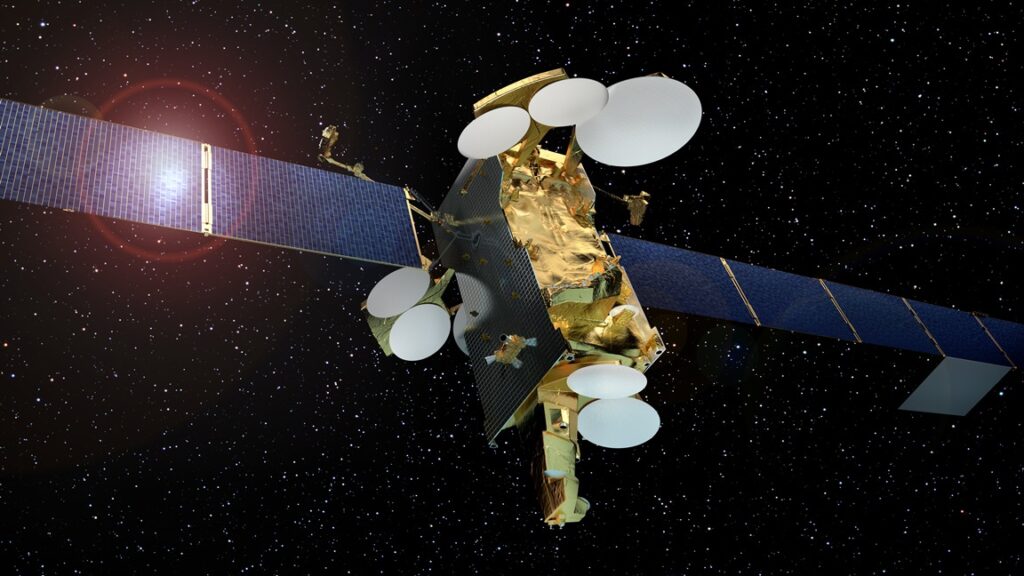In a recent series of posts on the GovSat Report, we looked at the next generation of satellites, High Throughput Satellites (HTS), how they differ from previous generations of GEO satellites, why they can be effective for executing UAV missions in the military, and the considerations for government entities looking to utilize HTS satellites to accomplish their mission.
Ultimately, we concluded that HTS can deliver increased capacity and better results at lower prices for the government and military.
To take a deeper look at the emergence of HTS, we sat down with satellite veteran, Jean-Pierre Choffray, the Vice President of System Architecture at SES. Jean-Pierre was integral in the design and planning phases of the SES-12 satellite – the first HTS in the SES fleet.
Here is what Jean-Pierre had to say:
 GovSat Report: SES-12 will be a replacement for NSS-6, but more importantly it is SES’s first High Throughput Satellite (HTS). Can you tell us more about the technical innovations and how they came about?
GovSat Report: SES-12 will be a replacement for NSS-6, but more importantly it is SES’s first High Throughput Satellite (HTS). Can you tell us more about the technical innovations and how they came about?
Mr. Choffray: It was a process essentially driven by the questions: what capabilities can the new satellite have? How can it satisfy emerging and future business demands? How can we best optimize its design?
We had been monitoring the market demands and technology landscape for several years, so our decisions zeroed in on the high-value opportunities across these domains.
For instance, from 95°E- where NSS-6 and SES-8 are co-located – we are currently serving the direct-to-home (DTH) broadcasting needs of around 20 million households in India and Indochina. That sounds like a lot, but we wanted to reach out to the vast areas that remain unserved or underserved, hence the wide-beam transponders.
At the same time, with connectivity demands from VSAT, enterprise, mobility, and government applications forming a fast-growing market, we planned for Ku- and Ka-band spot beams capable of delivering over 14 GHz HTS capacity.
With SES-12 having a double mission comprising both traditional wide-beam coverage and high-powered Ku-band multi-spot beam payload, we are looking at a hybrid satellite that gives us immense flexibility. This is enhanced even further with its digital processing ability, which allows us to optimize the allocation of capacity to key growth areas.
GovSat Report: What has it been like to work on the SES-12?
Mr. Choffray: For over 18 months, I worked closely with at least 50 people from across multiple teams, including systems engineering, spectrum management, and business development.
The team went all out to consolidate interdisciplinary insights, matching the technical realities and trends with technology and business demands. This makes for a richer and more sophisticated blueprint for design. We needed such a highly integrated collaborative effort to decide on the payload we needed, could, and should have.
GovSat Report: What technological innovations in SES-12 are you most excited by?
Mr. Choffray: For a long time, there was a question mark on whether or not a Digital Transparent Processor (DTP) would be on-board SES-12. This cutting-edge technology would enable us to offer extreme flexibility in terms of connectivity and thus to adapt to customers’ evolving requirements.
When we first started on the satellite design, the DTP was only an option that we kept open. When, after mapping out our technical and sales roadmaps, the decision was made to embark the DTP on-board, it was a very intense moment of satisfaction for the team – having such innovative technology on-board was very exciting!
On the whole, it was all very, very interesting, and ultimately rewarding to work on this from A to Z. I expect it to be much the same for SES-14 and 15, when we’ll need to continually challenge ourselves in building for the future.
For additional information on SES’s emerging, cutting-edge HTS constellation, click on the resources below:
- Find out the coverage areas for the SES HTS GEO fleet: SES-14, SES-15and SES-16
- Why Big Beams are a Big Deal to the Military – The GovSat Report
- How HTS investment today could spell serious savings for the military tomorrow – The GovSat Report
- Check out coverage of the HTS MEO constellation
- Find out the next SES launch date
